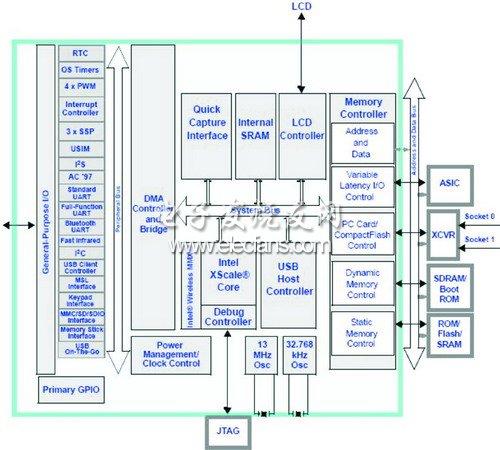Overview of mobile digital TV standards
There are currently four mobile digital TV standards in the world: DVB-H in Europe, S / T-DMB dominated by Korean manufacturers, ISDB-T led by NHK in Japan, and MediaFLO promoted by Qualcomm. China is independently developing the terrestrial digital TV standard-DMB-TH, which is mainly aimed at the traditional terrestrial digital TV market and theoretically covers the support for mobile digital TV. Compared with T-DMB, DVB-H has certain advantages in technology. The wider frequency spectrum makes DVB-H relatively flat in the frequency domain, thereby having better frequency consistency; QPSK used by DVB-H Compared with T-DMB's D-QPSK, the modulation method has 3dB redundancy; DVB-H's forward error correction technology (MPE-FEC) can bring 5-6dB gain; time slicing technology also makes DVB -H has lower power consumption (the average typical power consumption of DVB-H terminals is generally less than 80mW, while T-DMB is generally more than 200mW). However, due to the early development of T-DMB and the support of well-known manufacturers in South Korea, it is more mature than DVB-H in terminal equipment, overall solutions and business models, occupying a dominant position in China's mobile digital TV market. Many domestic mobile phone design manufacturers are researching and developing T-DMB mobile TVs. It is expected that the products will be available in early 2007.
Mobile digital TV terminal
From the perspective of application mode, mobile digital TV terminals can be divided into three categories: applications on notebooks, with emphasis on DVB-T; applications on mobile phones, with emphasis on DVB-H, T-DMB; and applications with dedicated devices (such as PMP) , The focus is also DVB-H, T-DMB. Generally speaking, a mobile digital TV terminal contains four key components, an antenna, a tuner (Tuner), a demodulator (De-modulator) and an application processor. Figure 1 shows the architecture of a typical mobile TV terminal.

Figure 1 DVB-H receiving terminal on mobile phone and PMP
The part in the red border can be designed to be separated into modules such as SDIO cards
Realization of Mobile Digital Mobile TV Based on Intel PXA270
PXA27x overview
The PXA270 processor is an integrated on-chip microprocessor that is widely used in high-performance, low-power, portable, and handheld devices. Due to the on-the-fly voltage adjustment technology, frequency adjustment technology and mature power management technology, the Intel XScale chip can provide industry-leading high-performance low-power (MIPs / mW) performance. The PXA27X processor uses the ARM architecture, V5TE instruction system, and follows the ARM programming model. At the same time, the PXA27X processor also provides wireless MMX integrated instruction sets for audio and video processing, which greatly improves the performance of the product within a certain range of power consumption.

Figure 2 PXA270 chip frame
The wireless MMX technology provided by Intel can avoid the use of additional processors or acceleration chips, thereby greatly extending battery life. Wireless MMX technology includes a set of advanced multimedia instruction sets that enable customers to significantly reduce power consumption while running rich applications, thus bringing the performance of desktop computers to the PXA27X processor. Intel wireless MMX technology originally originated from the Pentium processor family. Many software developers have mastered and used these instructions, which can quickly develop 2D and 3D games, MPEG4 streaming media, and wireless codec technology based on Intel cellular phones and handheld computers. , Digital TV reception and voice recognition applications.
Intel Wireless SpeedStep technology is used in the PXA27X processing family for the first time. This technology provides features that dynamically adjust power consumption and performance based on processor requirements. This new feature can freely change the voltage and frequency under the premise of ensuring the necessary performance for complex applications, thereby significantly reducing the power consumption of wireless handheld devices, increasing standby time and talk time. Xsclae Mobile DTV system
Figure 3 briefly shows the framework of a mobile digital TV system based on Xscale.

Figure 3 Block diagram of mobile digital TV based on Xscale
Conclusion
Xscale-based mobile digital TV applications are just like hotspot applications like GPS applications, and they are also very likely to be organically combined to form some multi-functional portable products together with PMP and mobile phone functions. Has been committed to the development and production of such portable products. For more specific situations, please refer to the reference design solutions such as Liod-DTV launched by Yidao Electronic Technology Co., Ltd.
CSRME Safety Controller is developed for standard GB27607. By monitoring machine tool safety related equipment, the security of machine control system can meet the requirements of GB27607, and its security meets the requirements of ISO13849-1 (PLe) and IEC61508 (SIL3).
With rich interfaces, CSRME has limited programmable function. It can simultaneously replace many different types of safety control modules or safety PLCs, thus greatly simplifying the safety design of machine control systems and reducing cost.
Safety Controller
Safety Controller,Modular Safety Controller,Safety Controller,Electrical Safety Controller,Programmable Logic Controller,Banner Safety Controller
Jining KeLi Photoelectronic Industrial Co.,Ltd , https://www.sdkelien.com